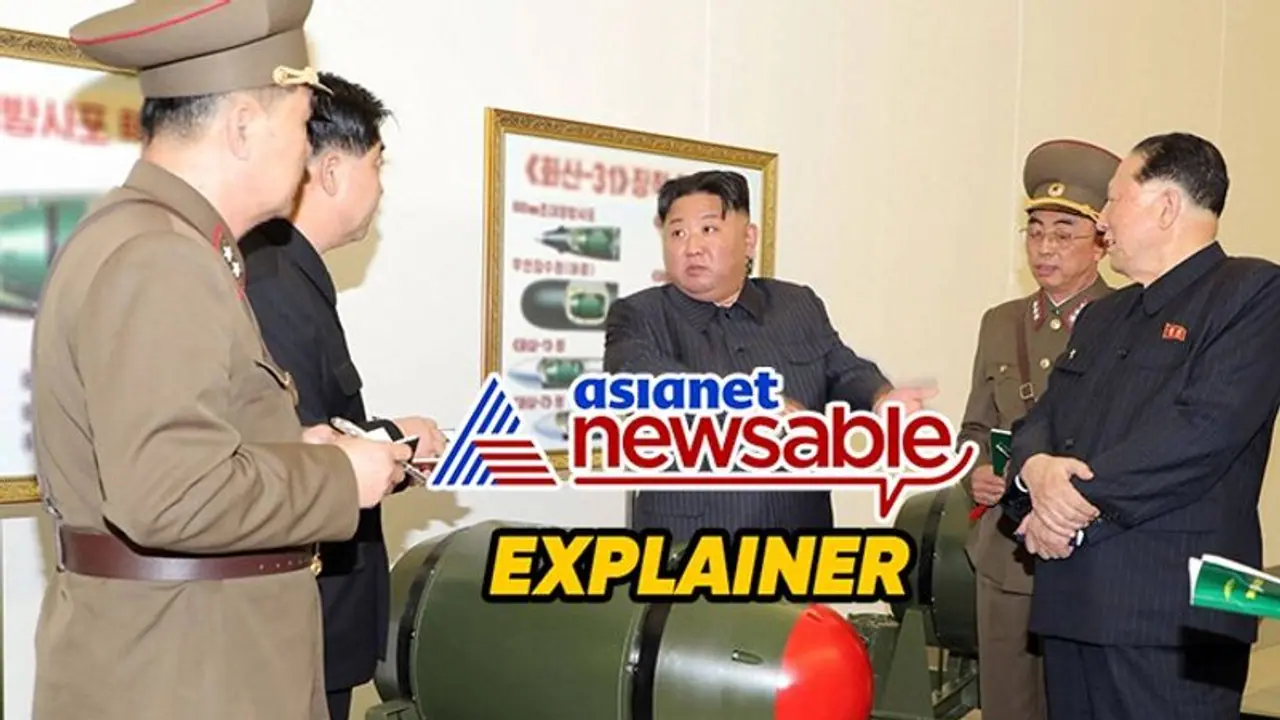The article explores North Korea's evolving nuclear capabilities, detailing Kim Jong Un's statements, legislative changes, and potential scenarios for deploying nuclear weapons, along with developments in the country's arsenal and strategic posture.
North Korean leader Kim Jong Un has declared that a recent missile test underscores his country's readiness to conduct a nuclear attack in response to provocation with strategic weapons. Observers suggest that Kim is actively working to operationalize such forces. Kim's statements are part of a series of declarations and legislative adjustments that articulate a comprehensive, ambiguous, and potentially destabilizing doctrine, according to analysts.

Here is the information available on when and how North Korea asserts it could employ its nuclear weapons.
Also read: North Korea claims its spy satellite took photos of White House, Pentagon
Under what circumstances could North Korea deploy its nuclear weapons?
North Korea asserts that it opposes war and maintains that its nuclear weapons serve a defensive purpose, necessary for safeguarding against perceived "hostile" policies from Washington, South Korea, and Japan.
During a military parade speech last year, Kim expressed that his nuclear force's primary role was to prevent war through deterrence. Additionally, he mentioned the potential for conducting strikes against anyone who infringes upon North Korea's "fundamental interests."
Analysts noted that these comments seemed to echo language found in the United States' Nuclear Posture Review, which outlines the use of nuclear weapons to defend its "vital interests" or those of its allies.
In September 2022, North Korea incorporated the right to employ preemptive nuclear strikes for self-protection into a new law.
Potential scenarios justifying a nuclear attack include the imminent threat of a nuclear strike, threats to the country's leadership, people, or existence, or to secure an advantage during a war.
According to the law, Kim Jong Un possesses "all decisive powers" concerning nuclear weapons. However, if the command-and-control system faces a threat, missiles may be launched "automatically."
According to state media reports, the recently enacted law prohibits the sharing of nuclear arms or technology with other nations. Its objective is to diminish the risk of a nuclear war by averting miscalculations among nuclear-armed states and the misuse of nuclear weapons.
Analysts, however, caution that if Kim Jong Un were to delegate launch authority to lower commanders in a crisis, it could heighten the potential for a catastrophic miscalculation.
In a further move, North Korea incorporated a constitutional amendment in September 2023, solidifying its policy on nuclear forces. Kim pledged to expedite the production of nuclear weapons as a deterrent against what he referred to as provocations from the United States.
In July, North Korean Defense Minister Kang Sun Nam stated that the deployment of US aircraft carriers, bombers, or missile submarines in South Korea could satisfy the criteria for North Korea's utilization of nuclear weapons.
Potential targets for North Korea's nuclear actions
In 2017, the same year North Korea achieved its first successful intercontinental ballistic missile (ICBM) launch, the country's foreign ministry issued a threat of a nuclear strike on "the heart of the US" in response to any perceived attempt by Washington to remove North Korea's supreme leadership.
During that year, North Korea also conveyed a threat to use its nuclear weapons to sink Japan into the sea.
Fast forward to 2022, Kim Yo Jong, the influential sister of Kim Jong Un, issued a statement asserting that North Korea would not hesitate to employ nuclear weapons in the event of an attack by South Korea.
Kim Yo Jong outlined a comprehensive scenario in which North Korea would activate its nuclear forces as a response to an attack from the South. In this envisioned situation, the utilization of nuclear capabilities would be aimed at "completely dampen the enemy's war spirits, prevent protracted hostilities and preserve one's own military muscle".
Look into North Korea's nuclear arsenal
North Korea has refrained from conducting nuclear weapon tests since 2017; however, analysts suggest it has likely persisted in the production of uranium and plutonium for warheads.
According to an April study by the Institute for Science and International Security, Pyongyang's arsenal could comprise between 31 to 96 nuclear weapons, contingent on the types of devices being constructed.
In 2021, Kim stated that North Korea had achieved the capability to "miniaturize, lighten, and standardize nuclear weapons." By January 2023, he declared the country's intention to "exponentially expand" its nuclear arsenal and "mass produce" tactical nuclear weapons.
Simultaneously, Pyongyang has advanced its missile capabilities for delivering nuclear weapons, including the development of large liquid- and solid-fuel intercontinental ballistic missiles (ICBMs) with the range to reach the United States. Additionally, the country has worked on short-range missiles designed for delivering tactical warheads and has introduced its first nuclear-armed cruise missiles.
The use of the term "launch drill" instead of "test firing" in describing a recent ICBM launch suggests that North Korea is prepared to mass-produce and deploy Hwasong-18 ICBMs, according to Cheong Seong-chang, an expert on North Korea's political strategy at the Sejong Institute near Seoul.
"Next year, North Korea will carry on its power for power posture by testing solid-fuel IRBMs, and SLBMs from strategic nuclear attack submarines and developing multi-warhead ICBMs," he wrote.
